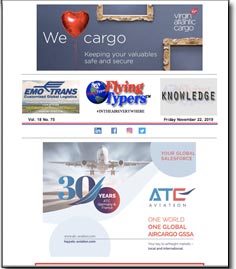|
Sir Richard Branson, the British billionaire
entrepreneur who launched Virgin Atlantic, summed up his experience in
the airline business with a pithy quote – “How do you change
a billionaire into a millionaire? Make him buy an airline.” His
observation speaks to a real puzzle:
Why is the airline industry, even for someone
with the experience and business chops of Sir Richard, such an underperforming
sector?
Thirty-Year Cycle
Despite alleged subsidies and actual government
programs, studies indicate that U.S. commercial aviation as a whole has
run at a loss for the last 20-30 years, its stock price lagging other
mature industries.
What is it about this business that keeps
it in the financial doghouse?
The Questions
If you ask airline executives, they blame
their low margins and inconsistent results on a host of outside factors,
anything from general economic conditions to unfair competition; trade
disputes to currency valuations; terrorism, Boeing, government regulations,
unions, pilot shortage, fuel prices . . . anything but their own leadership.
Setting aside those excuses, any quick analysis
will show that airline profits are fundamentally cyclical, rising to heady
peaks before crashing down into negative territory, and any slightly deeper
analysis demonstrates that behind this cyclicality lie poor management
decisions motivated by an obsession with two success metrics – market
share (you grow or you die) and peak period profitability (making the
most of the good times).
Some Answers
We all know that airlines are extreme fixed-cost,
perishable businesses, and in Econ 101 we were all taught that you don’t
grow a business based on cyclical peaks. So why do airlines continually
flout this common sense to build their fleets and facilities in the run
up to peak profitability?
The answer rests in their success metrics
– market share and revenue maximization in the peak cycle. While
outside factors can take a financial bite, most of airline underperformance
arises from chasing these metrics at the cost of long-term vision.
The Chase
Trying to time investment and expansion
to capture business on the upswing may goose profit projections short-term,
but it sets airlines up for a nasty situation once the lean times hit,
as they always do. Forced to meet high fixed costs that can’t be
quickly shed, they are forced to cut back on the one thing that the public
cares about, quality of service.
They chase nickels through any cut they
can think of, including cutting personnel costs (through layoffs and pay
cuts), cramming in more seats (which they then overbook), lowering the
quality of their meal service, and making frequent flyer point redemption
into a hassle of restrictions and forms.
Then they chase dimes by introducing charges
for everything – meals, checked bags, boarding preference, seat
selection, you name it – EasyJet and Ryan Air even considered putting
in coin-operated toilets. They do this to survive because they made the
wrong decisions in the peak times, and passengers pay the price in a degraded
and degrading flying experience.
This opens the door for new airlines with
lower costs to enter the market, triggering price wars which bankrupt
weaker carriers, ground aircraft, eliminate low-profit and shrink the
industry overall.
The Alternative
Is there an alternative? In my view, a better
airline strategy begins with changing success metrics from market share
and peak period profit to consistent performance and steady, sustainable
growth.
A few major passenger airlines, as well
as UPS and FedEx, have managed to survive and overperform thanks to this
mentality.
Bill Boesch
|




